Improve your Marketing Ops every week
Subscribe to our blog to get insights sent directly to your inbox.
Confront your process problems head on with a Sherpa by your side.
Explore support options that are tailored to meet you wherever you are on your climb.
Browse our pioneering Agile marketing courses
Learn from the stories of marketers already on the road to process improvement.
Featured Resource

State of Agile Marketing
Learn from 8 years of study on how marketers are increasing their agility.
Download Report
You did it! After weeks or even months of hard work, you’ve finished your latest marketing campaign. But despite all the work you put in, you’re still struggling with unhappy stakeholders, unclear ROI, ambiguous lessons learned, and more.
You’ve got some ideas about what’s causing these issues but it’s already time to start the next campaign. You can already feel that you’re probably going to face the exact same problems. It’s a vicious cycle most of us have been stuck in before and it’s honestly brutal.
At this point, you owe it to your stakeholders, your marketing team, and most of all yourself to end that frustrating cycle.
Luckily, whether you’re facing bad prioritization, silos, missed deadlines, or just disillusioned marketers, there are concrete and proven solutions you can employ. That’s why we’ve put together this list, breaking down exactly what you can do to solve your marketing challenges based on our years of studies and experience.
By the end, you’ll be ready to totally transform how you approach marketing campaigns.
At its core, a marketing campaign is a structured effort by marketers towards achieving a company goal. This might be something as simple as a series of ads designed to bring in new customers or it could be an 8 month campaign to promote a new product through articles, TV, billboards, in-person demos, etc.
A campaign might be run entirely within a single team or involve multiple teams in a larger department. Senior company leaders might be deeply involved or have no idea the campaign is going on. It also might be planned months in advance or be thrown together totally ad hoc.
In other words, marketing campaigns vary a lot. What unites them is that they are all focusing on achieving a business goal. That’s why so many of the problems and challenges around campaigns stem from what those goals should be and who decides. Working towards the right goal is always the foundation for a successful marketing campaign.
Whether your campaigns tend to be elaborate affairs involving multiple stakeholders, channels, and goals or simple and straightforward ones, the following tactics will help you make them better.
Let’s start with the most basic foundation of better marketing campaigns: stakeholder involvement.
Honestly, a huge number of campaign issues can be traced back to a lack of stakeholder involvement.
The first step to getting your stakeholders involved is obviously determining just who they are. The obvious answer would be your customers, but stakeholders actually make up any person or organization that has an interest in the marketing you’re doing.
That means your customers and company leaders, but can just as easily cover local governments, NGOs, or other interested parties. But your core stakeholders will generally be people within your company and customers.
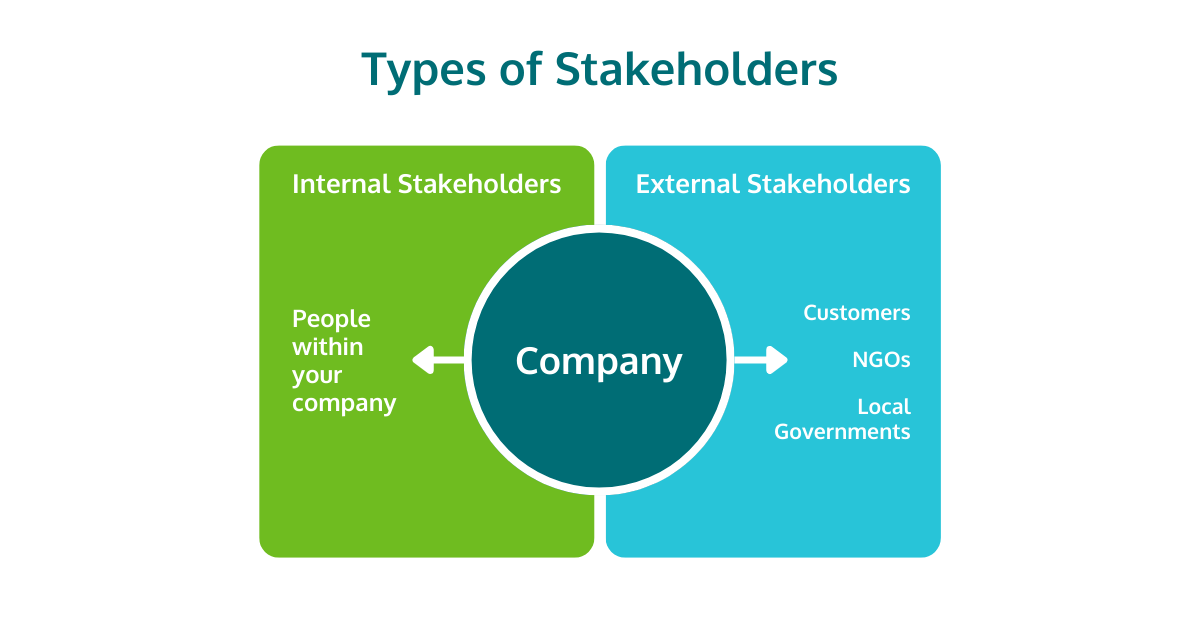
Why is it so important to identify these stakeholders? Imagine you conduct your marketing entirely to please one stakeholder: your customer. You might just end up giving your product or service away for free because that’s what will deliver the most value to that stakeholder. It’s like trying to run a race with one eye closed. Sure you can see, but your performance is going to suffer without a full 3D picture of what’s in front of you.
Likewise, if your only stakeholder was senior management, you might end up creating products or services that your customers have no interest in. Leaving anyone out inevitably means that value isn’t heading their way and the organization suffers as a result.
Once you know who your stakeholders are, how exactly should they be involved in your marketing? In short, in order to deliver maximum value to those stakeholders, you need to understand what they deem valuable.
Luckily, answering that question is straightforward: you just ask.
Look at all the steps in your marketing campaigns and determine the best places to get stakeholders involved in giving input. For example, if you’re preparing a digital ad campaign you might begin by asking senior leadership about what the company’s business goals are at the moment. Then you might do a small test to see how various versions of your ad copy resonate with your target audience.
That’s a simple example but it shows how easy it can be to begin getting stakeholder feedback throughout your marketing campaigns. Beyond following these steps, this kind of feedback is part of shifting your mindset around what your goals are.
The goal of your marketing campaigns should be to deliver value to stakeholders. Other goals like increasing sales are means to that end. Keeping this in mind will help keep you focused on the outcomes that matter.
Struggling to meet deadlines is one of the more universal challenges we have as marketers. But it’s too easy to let that reality trick us into thinking that it’s inevitable.
It’s not.
If you’re regularly struggling to get marketing campaigns done on time, there’s plenty you can do to change that. The first step is to improve how you prioritize.
Most of us think we prioritize our work the same way: we start with what’s most important and work our way down. There are a few problems with this approach. The first is that we often fall prey to our desire to actually do what’s easy instead of what’s important. The second is that what we think is most important may not be the task that actually delivers the most value to our stakeholders.
The solution to both of these problems is prioritizing collectively as a group. After all, what good are priorities if nobody knows what they are or understands where they’re coming from?
Instead of relying on individuals to decide on priorities, meeting regularly to determine what the team’s top priorities are is a more effective way to ensure everyone is on the same page and working together towards the same goals.
Then, that list of priorities should be kept visible to everyone at all times. This prevents misunderstandings because instead of relying on their own notes or memory, everyone can simply check to see what the next priority is once they complete a task. We’ll talk more about how you can use visualization tools for effective prioritization below.
It’s called the planning fallacy and nearly everyone has fallen prey to it at one time or another. Even marketers with years of experience tend to underestimate how long tasks will take. This recurring problem can cause massive headaches as deadlines get missed, time gets wasted waiting for work to be ready, and everyone gets frustrated.
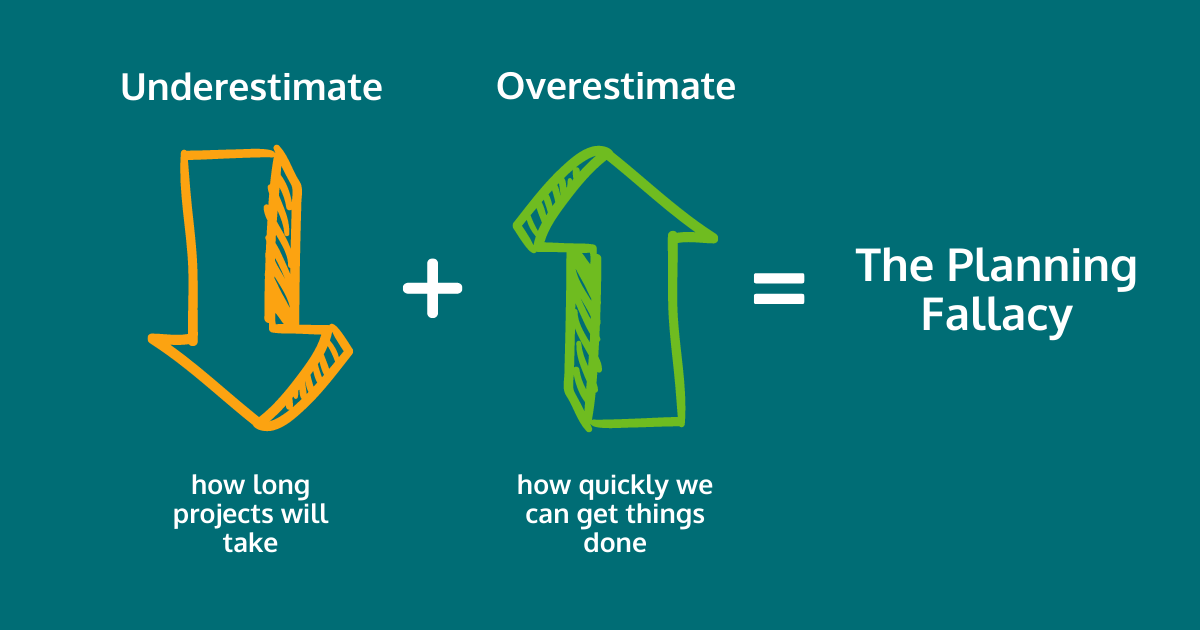
The good news is that there are proven ways to make our time estimates far more accurate. For example, games like Planning Poker enable teams to slowly improve their accuracy by gamifying the process during planning meetings.
While better prioritization and estimation will help a lot, unforeseen problems are still inevitable. So how should you handle them?
The first thing to do is use short daily standup meetings to ensure that everyone on your team is aware of what’s going on. Here, anyone facing a unique challenge that might prevent them from getting work done on time can raise the issue and ask for help. By making sure that solving such problems becomes the responsibility of the entire team, you help make everyone feel like they’re a part of a supportive team instead of a lonely island struggling on their own.
Marketers love boasting about their ability to multitask, but research has long shown that doing multiple tasks simultaneously or even just switching between them has a huge effect on our productivity. We may not realize it at the moment, but every single instance when we switch between tasks we lose focus that we have to spend precious time getting back.
It’s no wonder limiting the number of tasks you’re working on at any given time is a great way to improve your productivity and help you focus. A great way to do this for marketers is by using WIP limits, essentially caps on the number of tasks you or your team are allowed to actively work on at any given time.
It’s a bit like forcing yourself to finish reading a book you’ve already started before you pick up a new one. Besides helping you focus and be more productive, this is a great way to push yourself to finish tasks that might otherwise languish unfinished for weeks or longer. The battle with our inner procrastinators is never truly won, but it’s a great way to finally get a leg up.
Imagine two marketers. One creates detailed annual plans and strictly adheres to them. The other doesn’t plan at all, simply figuring out what makes sense as he goes.
Which approach is better for achieving your goals?
Neither!
Relying on detailed plans that may have been developed months ago is a surefire way to end up with marketing campaigns that try and achieve goals that stopped being relevant ages ago. It’s a bit like deciding you’re going to spend a year traveling the world and planning every single day of the trip ahead of time. You’re going to learn things and change along the way, so deciding what you want to do on a Tuesday 8 months in the future doesn’t make sense.
But abandoning planning altogether makes it nearly impossible to ensure successive campaigns add up to something greater. Instead of relying on either extreme, the best way to ensure your marketing campaigns are achieving relevant goals is by using flexible planning and goal setting to get the best of both worlds.
Begin with goals developed in partnership with your stakeholders. These can be quarterly or even annual, what’s important is that marketing remains flexible on how those goals are to be achieved.
Instead of planning everything ahead of time, the team can start with a smaller marketing campaign designed to test some ideas. Then, based on the results, subsequent campaigns can be adjusted and improved. In this way, marketers gradually learn what will help them achieve their goals instead of sticking to an old plan.
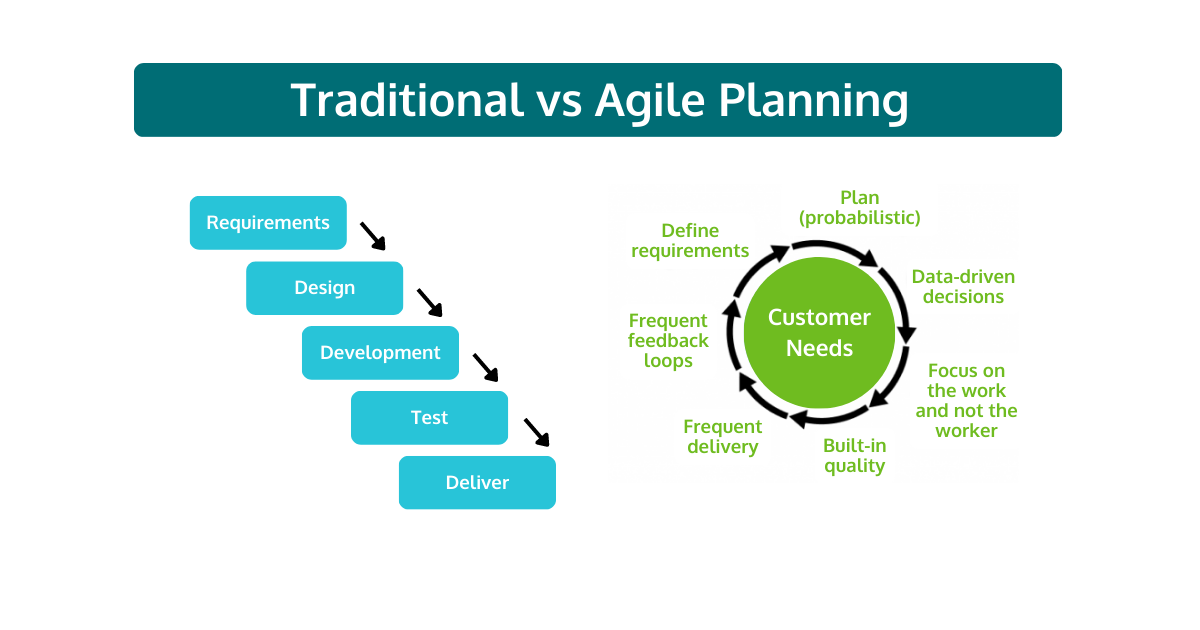
Flexible planning enables a balance between stability and adaptation. Everyone knows what the team is working towards while also consistently developing the best path.
Communication and visibility are key to the success of any marketing campaign. Not having access to information inevitably leads to campaigns getting stuck waiting for someone to answer a question or share key information about priorities. The result is wasted time, resources, and plenty of frustration.
This is why visualization boards are so incredibly useful. They offer the ability to get a general picture of a team’s work at a glance along with the chance to dive deep into individual tasks and projects. Here’s an example of what that looks like:
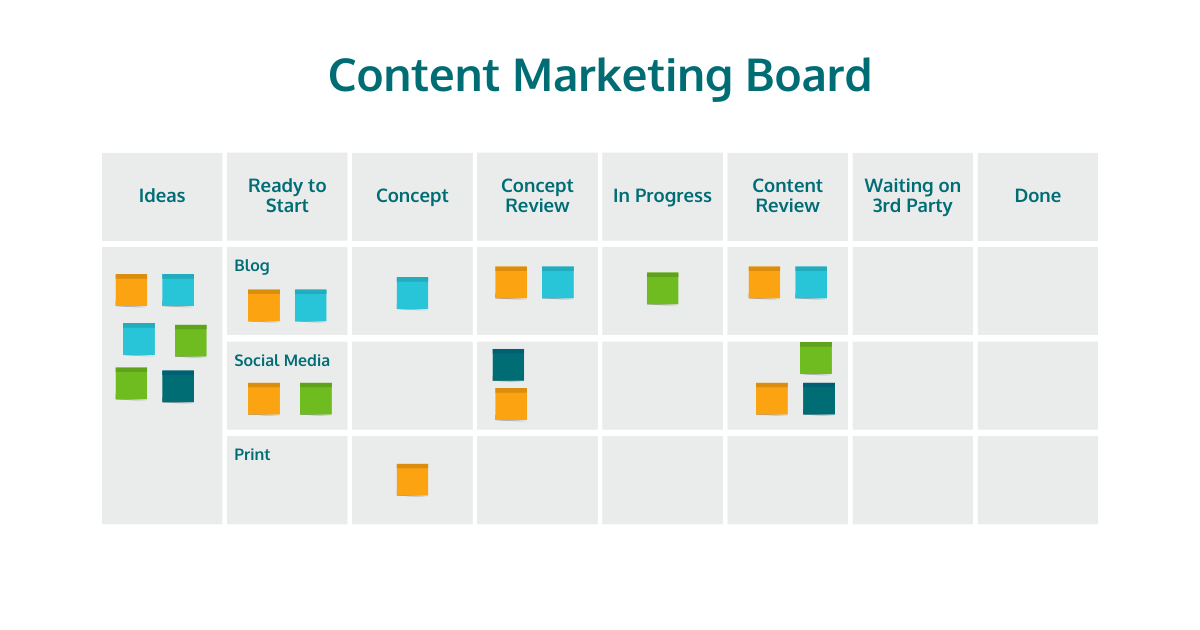
Columns represent the status of work while cards in those columns represent tasks. Each card contains all the information a marketer needs to complete the task along with a history of comments, changes, etc. The order of the cards in the columns also represents their priority, so everyone on the team always knows what they should work on next.
Now consider all the time your team members spend looking for information, wondering what to work on next, asking whether a colleague has started working on something, forgetting when a deadline was, and more. A good visualization board enables team members to answer these kinds of questions on their own in seconds.
Beyond the basic value of saving time, this also helps create a culture of empowerment. Everyone knows they have what they need to do valuable work towards broader goals without constantly needing to ask for information and guidance.
While some marketers have little trouble proving ROI (looking at you person running Facebook ads…) plenty of us struggle finding ways to demonstrate the value we’re providing our stakeholders.
While there’s no silver bullet for demonstrating precisely how things like impressions directly translate into revenue, there are tactics you can use to better demonstrate ROI. One of the most effective is user stories.
While there are multiple good ways to create user stories, here is a basic format:
As a USER PERSONA, I would like A CERTAIN FEATURE so I can ACHIEVE AN OUTCOME.
Here is an example of what a user story using that format might look like:
As a content marketer, I would like to have a better way to define ROI, so I can explain the value I provide to my stakeholders.
Instead of thinking of ROI purely in terms of data, user stories give us a clear picture of what needs to be created for who and what that thing should achieve.
Another benefit of user stories is that they make it easier for marketers to remain focused on the ultimate value a marketing campaign is supposed to deliver. It’s far too easy to forget what the actual goal of a campaign, piece of content, or other task was.
Knowing what value the work you’re doing is going to deliver helps keep us marketers focused, motivated, and conscious that our work is really contributing towards broader goals. If you’re trying user stories for the first time, you can also read up on some tips for using them effectively.
All the tactics we’ve mentioned so far are great, but in the end, you still need a system for evaluating how your marketing campaigns went and testing ideas for improvement. That’s where retrospectives (retros) come in.
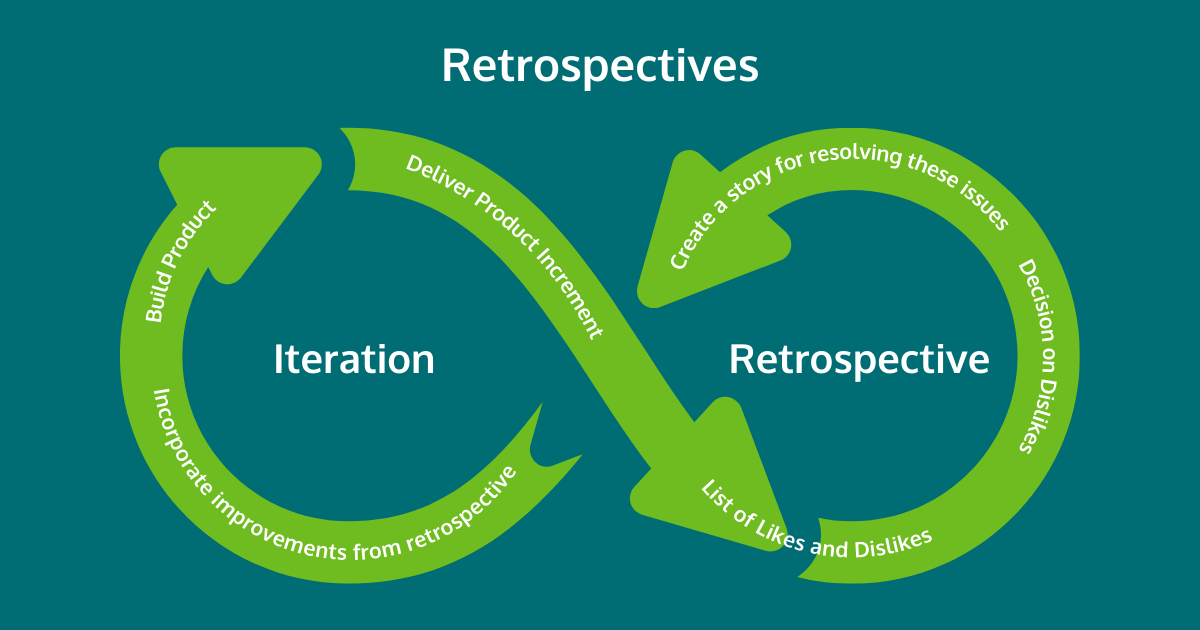
Usually held every few weeks depending on how you structure your work, retros set aside a few hours for the team to discuss what is going well, what could be improved, and brainstorm ideas for creating those improvements. You can also make this input anonymous, creating a fantastic opportunity to hear from team members who might not speak up otherwise.
Regardless of your approach, retros are your chance to harness all the ideas and experiences of your team to gather suggestions for how you can improve your future marketing campaigns. Importantly, you then need to ensure you properly test these ideas and remember to evaluate them at future retros to decide whether to implement the ideas permanently.
Implementing retros this way helps create a culture of continuous improvement within your marketing team. It regularly reminds everyone that each marketing campaign should be better than the last because your team is always evaluating its performance and looking for ways to improve.
Of course, these meetings can feel a bit stale over time so it’s important to change things up every once in a while to keep your team members engaged.
We’ve covered a wide range of tactics you can use to improve your marketing campaigns, but the best way to implement all of them at once is to try Agile marketing. Everything covered in this article is a part of Agile ways of working and, taken together, can reliably improve your campaigns and even how your marketers feel about their work.
How do we know? Besides having seen this play out countless times over the years, we’ve also seen the benefits in data.
In fact, the 2024 State of Agile Marketing Report showed that 92% of fully Agile marketing teams felt they were contributing to the organization’s long-term success. 86% felt they could handle fast-paced work and 82% felt empowered to push back on work that doesn’t align with organizational goals. Curious to learn more? Get the latest version of report now:
Time and time again we’ve seen that Agile helps marketing teams feel better and do more with the limited resources at their disposal. It’s no wonder the report shows that 82% of marketers either use Agile already or plan to in the next year.
More often than not, the biggest challenge is finding the best way to unlock those Agile benefits. Fortunately, we’ve created a whole suite of courses designed to help you do precisely that. Our online platform The Ropes offers intro courses, certification courses, live courses with experienced instructors, self-paced courses, and much more.
Check out our offerings or get in touch and we’ll help you find the one that’s right for your needs.
Subscribe to our blog to get insights sent directly to your inbox.
Subscribe to our blog to get insights sent directly to your inbox.